Dialogue
What is RNA?
An ageless worker with information and a function
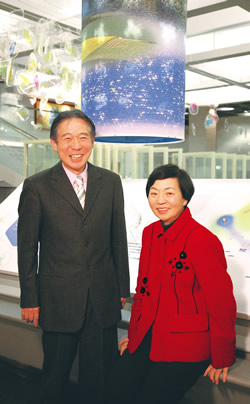
Photograph by Naruaki Onishi
(Keiko Nakamura)
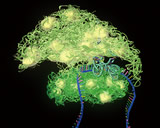
The ribosome creating protein / Computer graphic from "What is DNA?"
What appear to be tiny grains of salt on the surface is the protein. Most of the ribosome is RNA, and this operation is quite old.
(Yoshikazu Nakamura)
The important part of creating protein is the RNA that acts as an enzyme and ribozyme.
(Keiko Nakamura)
Keiko Nakamura --
It's interesting that living creatures have had, for 3.8 billion uninterrupted years, an unchanging system that is a combination of alignment and shape, which is the specialty of RNA. It might also be a boundary.
Yoshikazu Nakamura --
RNA contains information that includes how to function to create form, in its own sequence. It is the source of flexibility and diversity. Life was created in the fuzzy world of RNA.
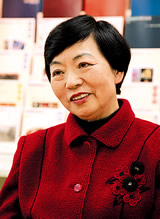
Keiko Nakamura --
It began from RNA, but it shifted to the DNA in the center of the cell, and it has the role of functioning without restraint. Recently, people have begun paying attention anew to the many small RNA activities. What are their characteristics?
Yoshikazu Nakamura --
The sequence is different depending on the seed, but the form they create is similar. This is interesting both in terms of function and evolution. To learn more about it, we have to continue to make a concerted effort and keep thinking the whole time.
Keiko Nakamura --
The most fascinating parts are the most difficult. I hope you keep having difficulties-I'll be cheering you on!
After the dialogue
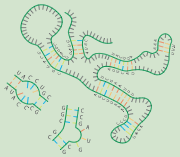
RNA takes a variety of forms
(From "Biohistory as Told by the Genome")
RNA is slightly different from DNA, and the beauty of RNA is that it has flexibility of form, without a perfect double helical structure.
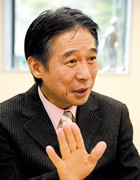
Dr. Nakamura received a science degree from Kyoto University in 1972, and was awarded a doctorate in science from the same university in 1977. After serving as an associate professor at the Institute of Medical Science at the University of Tokyo, he is now a full professor at the institute's Division of Molecular Biology. He is also the representative researcher of the Spacio-Temporal Network of RNA Information Flow, a designated research field by the Ministry of Education, Culture, Sports, Science and Technology. He has co-authored such works as RNA Cellular Biology and RNA Renaissance.
- Dialogue:What is RNA? An ageless worker with information and a function
Yoshikazu Nakamura / Keiko Nakamura - Research01:A backstage look at becoming multicellular using cellular slime molds
Hideko Urushihara - Research02:Lions as a symbol of other
Kazuyoshi Sugawara - Scientist Library:Looking at plants, asking plants
Hiroh Shibaoka
|
|